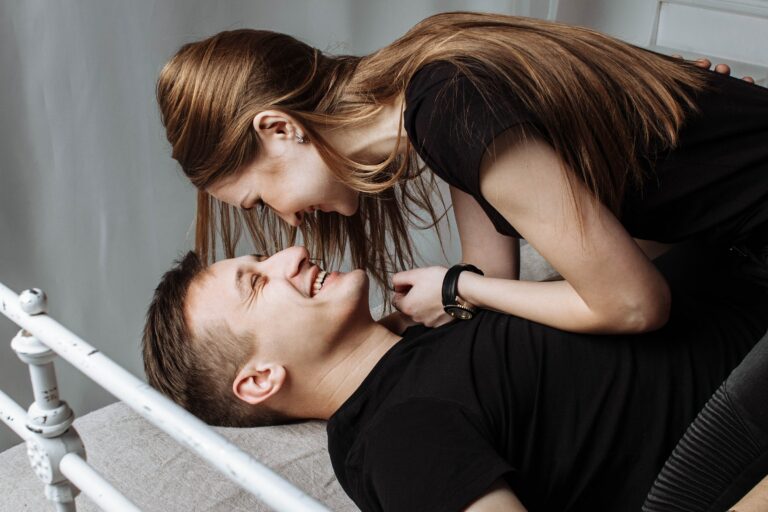Emotional focused therapy
Today we will look at why Emotional focused therapy is the most successful couples therapy and why I have chosen to make it the foundation for my work with couples and singles looking to date again.
To learn more about my work and working with me, click here.
Emotional focused therapy was developed by Sue Johnson and based on attachment theory by John Bowlby.
In observations of children, it was noticed that children would form specific patterns of how they related to others based on how their caregivers responded to them.
These behaviours would become automatic and dictate the outcome and the dynamic of their adult relationships.
They are what is refed to as attachment styles.
They are unconscious/implicit emotional memories of a child that still guide our behaviour, triggers and how we respond to others.
Emotional focused therapy is based on predictable dynamics and behaviours of these attachment styles
So, how can we spot them, break the cycle, form new behaviours that restore the safety we did not experience as a child, and create a safe, secure relationship dynamic to flourish from.
The 4 attachment styles of emotional focused therapy are based on.
• secure
• avoidant (Withdrawal, dependence on self)
• anxious (seek fast commitment and anxious about abandonment)
• disorganised (Want you close, but push you away when you get close)
Avoidant, anxious, and disorganised are insecure attachment styles based on anxiety or fear of being let down or rejected.
Our young child developed protective strategies to protect us from caregivers who did not respond to us with consistent acceptance, care, and calmness.
If a child consistently had responsive parents who understood and fulfilled their needs growing up, they are more likely to develop a secure attachment style.
They’ll see relationships as a safe space where they can express their emotions freely.
They feel safe both on their own and in connection with others.
They expect and anticipate positive responses to their emotional and physical needs.
Insecure attachment styles develop if the caregivers did not respond to the child’s needs, neglect or abuse was present.
In emotional focused therapy, we focus on attachment styles in adult romantic relationships.
“We unconsciously expect our romantic partners to act as our parents did, and therefore, we act in certain ways due to these expectations,” – Jordan.
You can change attachment styles, which will be expressed differently depending on your partner’s attachment style.

What’s a secure attachment style?
Secure attachment is defined by an ability to create long-lasting relationships based on a balance between individuality and a mutual support system.
How secure attachment develops
Secure attachment is the result of feeling safe, seen and accepted by your caregivers and being able to ask for reassurance or validation without punishment.
You felt safe, understood, comforted, and valued during your early interactions.
Your caregivers were probably emotionally available and aware of their own emotions and behaviours.
Signs of a secure attachment:
• Ability to regulate your emotions
• Ability to self-reflect
• Easily trusting others
• Communicate needs and boundaries well
• Ability to be vulnerable
• Comfortable being alone
• Comfortable in close relationships
• Ability to manage conflict well and repair
• ability to be emotionally available
People with secure attachment styles most often navigate relationships well.
They’re generally trusting, understanding and loving to their partners.

What’s an avoidant attachment style?
“[It’s] defined by failures to build long-term relationships with others due to an inability to engage in physical and emotional intimacy,” – Peoples.
How it develops
You may have had strict or emotionally distant and absent caregivers in childhood.
Your caregivers may have:
• left you to deal with stress yourself
• Expected you to be independent
• Told you off for depending on them
• Rejected you when expressing your needs or emotions
• Let you cry it out
“Some avoidant-producing parents are outright neglectful, but others are simply busy, slightly disinterested, and more concerned with things like grades, chores, or manners than feelings, hopes, dreams, or fears,” – Jordan.
They learn to adopt an over-reliance independence, so they don’t have to rely on anyone else for care or support.
They don’t trust others to respond favourably to their needs, so they shy away from closeness, withdraw and prefer to deal with stress on their own.
Signs
You might have an anxious-avoidant attachment style if you:
• Persistently avoid emotional or physical intimacy
• Feel a strong sense of independence
• Are uncomfortable expressing your feelings
• Are dismissive of others
• Have a hard time trusting people
• Feel threatened by anyone who tries to get close to you
• Believe you don’t need others in your life
They tend to have commitment issues and prefer low commitment and casual encounters.
In conflicts, they tend to withdraw and move away instead of turning towards you to repair.
Their withdrawal tends to trigger the anxious attachment style who fear abandonment.
Want help with your attachment style or relationship? Then learn more here.

What’s an anxious attachment style?
Signs of anxious attachment are:
• Fear of rejection
• Fear of abandonment
• Rush into relationships
• People-pleasing
• Depending on a partner for validation and emotional regulation
• Codependent tendencies
How it develops
This attachment style develops from inconsistent parenting that isn’t attuned to a child’s needs.
“These children have difficulty understanding their caregivers and have no security for what to expect from them moving forward. [They’re] often confused within their parental relationships and feel unstable,” – Peoples.
They experience very high distress when their caregivers leave or are unresponsive.
Signs you might have an anxious attachment style are:
• Anxious when your partner is away or unresponsive
• Clingy tendencies
• Needs others to calm down
• People-please and prioritise other’s needs over your own
• Needing approval from others
• Intense fear of rejection
• Significant fear of abandonment
How it manifests in relationships
People with anxious attachment styles usually feel unworthy of their needs and require constant reassurance from their partners.
Ultimately, there’s a deep-rooted fear of being abandoned, rejected, or alone.

What’s a disorganised attachment style?
“Anxious-disorganised attachment is defined as having extremely inconsistent behaviour and difficulty trusting others” – Peoples.
How it develops
The most common causes of a disorganised attachment style are childhood trauma, neglect, or abuse.
“Caregivers are inconsistent and are often seen as sources of comfort and fear by their children, which leads to their disorganised behaviours” – Peoples.
Signs of a disorganised attachment style are:
• Contradictory behaviours. Seek closeness and then push you away.
• High levels of anxiety
• Difficulty trusting others
• Signs of both avoidant and anxious attachment styles
In relationships, people with disorganised attachment styles tend to have unpredictable and confusing behaviour.
They alternate between being aloof and independent and being clingy and emotional.
“While they desperately seek love, they also push partners away because of the fear of love,” – Peoples.
Emotional focused therapy works by restoring a secure attachment for the individual and couple dynamic.
Emotional focused therapy helps you spot these unconscious behavioural patterns causing issues in your relationships, and the cycle couples get stuck in.
This allows a new form of engagement based on awareness and choice to choose new responses that create safety and enable you to be seen, accepted and met in your core needs.
Emotional focused therapy is a rewiring of our safety and attachment system so we can engage with the world and our partners feeling safe and secure.
If you want to learn more and work on this, see more here.
If you prefer to learn online and on your own, you can do so here.